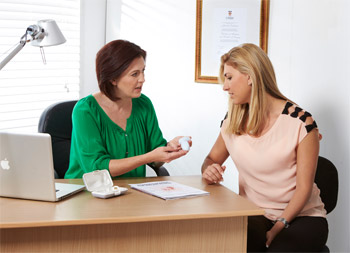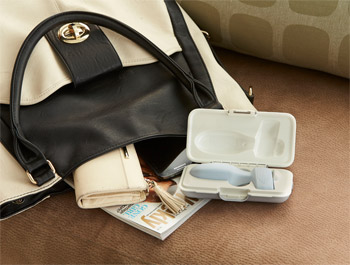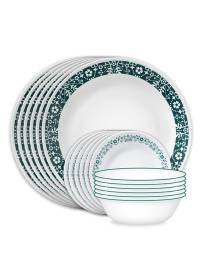Marietta Mehanni Pelvic Floor Workout Interview

Marietta Mehanni Pelvic Floor Workout Interview
When committing to New Years' resolutions, the most common promises made to our future self are centred on health and fitness. For many, this refers to body shapes and toned thighs and tummies, forgetting that what is on the inside is just as important!
It's a truth universally acknowledged – pelvic floors are never top of the list. The majority of Aussie women probably haven't thought about their pelvic floor muscles recently, despite knowing that having a strong pelvic floor is important – before, during and after childbirth especially. In fact, a staggering 70 per cent of Australians with urinary leakage – the primary symptom of a weak pelvic floor - do not seek advice and treatment for their problem.
Make 2016 is the year of being proactive when it comes to strengthening your pelvic floor muscles, rather than just 'padding the problem" - bladder leakage is not something you should put up with! Restoring your pelvic floor to perfect health in 2016 is one resolution that's easy to keep - it takes minutes, requires minimal exertion and can have a positive impact on all areas of your life – emotional, physical and mental. As an added bonus, pelvic floor exercises – also known as Kegels - can be done anywhere and at any time – at home, in the office (nobody will know what you're up to!), or even at the movies.
Childbirth, menopause and other events can injure the pelvic floor muscles, all of which help support the bladder. When these structures weaken, the bladder shifts downwards and as a result, leaking can occur during moments like coughing, laughing, jumping, lifting or running. By strengthening the pelvic floor, it can help reduce/eliminate leaking, improve sexual function, reduce chance of pelvic organ prolapse, strengthen the overall core and improve muscle control and confidence.
Women's Health physiotherapist, Annette Innes offers her Top 5 Tips for strengthen pelvic floor muscles:
1) Ensure you are doing a correct and optimal exercise technique. If you are unsure, see a Continence and Women's Health Physiotherapist; locate the nearest to you via the link: https://www.physiotherapy.asn.au/APAWCM/Controls/FindAPhysio.aspx.
2) Try the -Stop the Flow" test. Stop the flow of urine midstream but NOT first thing in the morning when you have a full bladder and strong flow, only once per wee, and make sure you can start again to finish passing your urine. This is only a test, and should not be done more than once per week. It is not always an indication of your pelvic floor muscle strength, but provides awareness of the muscles for some people.
3) Set aside some time each day for pelvic floor exercises. You will need to focus to do a correct contraction at first, so traffic lights may not be safe! Some women do their exercises at a toilet stop after a wee – when wiping, while sitting, while standing, and walking to wash their hands. Those who persist are those who will succeed!
4) Don't try too hard. It is important to localise your exercise to the muscles around your vagina and urethra. Your neck, eyebrows, chest and upper abdominals are not attached to the pelvic floor and will waste your valuable energy – keep breathing!
5) Try a home biofeedback device. This can be used for self-assessment and motivation; PeriCoach was developed in consultation with healthcare professionals: www.pericoach.com.
Award-winning Australian fitness presenter Marietta Mehanni says the biggest challenge for most women is reminding themselves to actually do pelvic floor exercises: 'One method to help remind you to do your exercises is to set a daily timer – particularly at a time in the day that is the least bit interesting, such as waiting in a line, for an attachment to load up on the computer, or even whilst in a conversation that may not interest you. Performing pelvic floor exercises during these times will certainly make the time go faster!"
It's a truth universally acknowledged – pelvic floors are never top of the list. The majority of Aussie women probably haven't thought about their pelvic floor muscles recently, despite knowing that having a strong pelvic floor is important – before, during and after childbirth especially. In fact, a staggering 70 per cent of Australians with urinary leakage – the primary symptom of a weak pelvic floor - do not seek advice and treatment for their problem.
Make 2016 is the year of being proactive when it comes to strengthening your pelvic floor muscles, rather than just 'padding the problem" - bladder leakage is not something you should put up with! Restoring your pelvic floor to perfect health in 2016 is one resolution that's easy to keep - it takes minutes, requires minimal exertion and can have a positive impact on all areas of your life – emotional, physical and mental. As an added bonus, pelvic floor exercises – also known as Kegels - can be done anywhere and at any time – at home, in the office (nobody will know what you're up to!), or even at the movies.
Childbirth, menopause and other events can injure the pelvic floor muscles, all of which help support the bladder. When these structures weaken, the bladder shifts downwards and as a result, leaking can occur during moments like coughing, laughing, jumping, lifting or running. By strengthening the pelvic floor, it can help reduce/eliminate leaking, improve sexual function, reduce chance of pelvic organ prolapse, strengthen the overall core and improve muscle control and confidence.
Women's Health physiotherapist, Annette Innes offers her Top 5 Tips for strengthen pelvic floor muscles:
1) Ensure you are doing a correct and optimal exercise technique. If you are unsure, see a Continence and Women's Health Physiotherapist; locate the nearest to you via the link: https://www.physiotherapy.asn.au/APAWCM/Controls/FindAPhysio.aspx.
2) Try the -Stop the Flow" test. Stop the flow of urine midstream but NOT first thing in the morning when you have a full bladder and strong flow, only once per wee, and make sure you can start again to finish passing your urine. This is only a test, and should not be done more than once per week. It is not always an indication of your pelvic floor muscle strength, but provides awareness of the muscles for some people.
3) Set aside some time each day for pelvic floor exercises. You will need to focus to do a correct contraction at first, so traffic lights may not be safe! Some women do their exercises at a toilet stop after a wee – when wiping, while sitting, while standing, and walking to wash their hands. Those who persist are those who will succeed!
4) Don't try too hard. It is important to localise your exercise to the muscles around your vagina and urethra. Your neck, eyebrows, chest and upper abdominals are not attached to the pelvic floor and will waste your valuable energy – keep breathing!
5) Try a home biofeedback device. This can be used for self-assessment and motivation; PeriCoach was developed in consultation with healthcare professionals: www.pericoach.com.
Award-winning Australian fitness presenter Marietta Mehanni says the biggest challenge for most women is reminding themselves to actually do pelvic floor exercises: 'One method to help remind you to do your exercises is to set a daily timer – particularly at a time in the day that is the least bit interesting, such as waiting in a line, for an attachment to load up on the computer, or even whilst in a conversation that may not interest you. Performing pelvic floor exercises during these times will certainly make the time go faster!"
 Interview with Marietta Mehanni
Interview with Marietta Mehanni
Question: Why should we commit to strengthening our pelvic floors for our New Years' resolutions?
Marietta Mehanni: Leaking happens and it happens to a large percentage of women. How it happens can be from a variety of different reasons, but the end result is the same. Leaking. And this can impact a woman's everyday life in so many ways. From dehydration to avoid leaking when exercising or when a toilet will not be easily accessible to spending over $6000 per year on continence pads. Avoiding social situations, refraining from activities including exercising, and always wearing black on the bottom half are other outcomes from not have a strong pelvic floor. Why commit to strengthening pelvic floor – because it gives you freedom to do what you want and when you want to. It puts away those fears that it will just progressively get worse and provides women with confidence to move about their everyday lives without having to constantly think about where the next toilet is.
Question: What is our pelvic floor?
Marietta Mehanni: The pelvic floor is a group of muscles that create a sling to support the internal muscles. It stretches from the base of the skeleton (coccyx) to the pubic bone in the front, and from one sit bone to the other (the ones that you feel when you are sitting on something hard). These muscles are the only support that our internal organs have as there is no other boney support in this area.
Question: How will we know if we need to strengthening our pelvic floors?
Marietta Mehanni: It is not a matter of how will you know as much as it needs to be a daily practice so that you never get to the point that you have to address the following issues, which are symptomatic of a weak pelvic floor: leaking when you cough, laugh, sneeze or jump, having to go to the toilet more than 8 times a day, having to go to the toilet more than twice a night, being challenged by needing to go to the toilet…NOW and noticing that every time exercise is performed, that leaking has also occurred.
Question: What happens if we don't commit to strengthening our pelvic floors?
Marietta Mehanni: Some people may never have any issues, but this is a small percentage. Pregnancy, menopause and everyday life activities all please stressed on this muscle which supports the entire weight of our internal organs and assist with inter-abdominal pressure changes. It can result leaking urine, faeces or an organ prolapse when the internal organs move to where they shouldn't be or actually outside the body. A woman's whole lifestyle has to change and there is also the challenges with having enjoyment in sexual intercourse.
Question: How can we strengthening our pelvic floors?
Marietta Mehanni: There lots of simple exercises that strengthen the pelvic floor and it is a simple matter of lifting the pelvic floor as much as possible and then relaxing. Having said that, because it is a muscle that we can't see and observe it's action like a bicep curl bends the elbow, it can be a little tricky. In fact, some women push down rather than lifting and then claim that pelvic floor exercises don't work. The best initial action is to see a Women's Health Physiotherapist who can instruct and ensure that the exercises are performed correctly and at the appropriate dosage. Other than that, the Pericoach is a ground breaking device that is simple to use and provides that visual feedback that can definitely assist women that are wondering -am I doing this properly'.
Question: Where can we do these exercises?
Marietta Mehanni: Pelvic floor exercises can be performed EVERYWHERE. Because it is invisible to the eye and the lifting action does not move any other muscle, it can be performed whilst standing, lying, sitting, whilst doing exercise or activities where focus can also be brought to lifting the pelvic floor. It can be performed while talking to someone, answering emails, waiting in line or watching the kids play. There is absolutely no excuse why a woman can't do regular pelvic floor exercises – money and time is certainly not one of them.
Question: How will we know whether these exercises are working?
Marietta Mehanni: You will start noticing little changes – no leaking when laughing, coughing, sneezing. You also become aware that you will not visit the toilet as frequently and you are drier during the day and perhaps also not need to use a pad any more. You will sleep better because you don't get up as frequently to go to the toilet and your sexual sensation will improve. Life starts go back to a normality that you once remembered and most importantly, you will have the confidence that this is something that you can something about and that it will not progressively get worse and worse.
Interview by Brooke Hunter
Marietta Mehanni: Leaking happens and it happens to a large percentage of women. How it happens can be from a variety of different reasons, but the end result is the same. Leaking. And this can impact a woman's everyday life in so many ways. From dehydration to avoid leaking when exercising or when a toilet will not be easily accessible to spending over $6000 per year on continence pads. Avoiding social situations, refraining from activities including exercising, and always wearing black on the bottom half are other outcomes from not have a strong pelvic floor. Why commit to strengthening pelvic floor – because it gives you freedom to do what you want and when you want to. It puts away those fears that it will just progressively get worse and provides women with confidence to move about their everyday lives without having to constantly think about where the next toilet is.
Question: What is our pelvic floor?
Marietta Mehanni: The pelvic floor is a group of muscles that create a sling to support the internal muscles. It stretches from the base of the skeleton (coccyx) to the pubic bone in the front, and from one sit bone to the other (the ones that you feel when you are sitting on something hard). These muscles are the only support that our internal organs have as there is no other boney support in this area.
Question: How will we know if we need to strengthening our pelvic floors?
Marietta Mehanni: It is not a matter of how will you know as much as it needs to be a daily practice so that you never get to the point that you have to address the following issues, which are symptomatic of a weak pelvic floor: leaking when you cough, laugh, sneeze or jump, having to go to the toilet more than 8 times a day, having to go to the toilet more than twice a night, being challenged by needing to go to the toilet…NOW and noticing that every time exercise is performed, that leaking has also occurred.
Question: What happens if we don't commit to strengthening our pelvic floors?
Marietta Mehanni: Some people may never have any issues, but this is a small percentage. Pregnancy, menopause and everyday life activities all please stressed on this muscle which supports the entire weight of our internal organs and assist with inter-abdominal pressure changes. It can result leaking urine, faeces or an organ prolapse when the internal organs move to where they shouldn't be or actually outside the body. A woman's whole lifestyle has to change and there is also the challenges with having enjoyment in sexual intercourse.
Question: How can we strengthening our pelvic floors?
Marietta Mehanni: There lots of simple exercises that strengthen the pelvic floor and it is a simple matter of lifting the pelvic floor as much as possible and then relaxing. Having said that, because it is a muscle that we can't see and observe it's action like a bicep curl bends the elbow, it can be a little tricky. In fact, some women push down rather than lifting and then claim that pelvic floor exercises don't work. The best initial action is to see a Women's Health Physiotherapist who can instruct and ensure that the exercises are performed correctly and at the appropriate dosage. Other than that, the Pericoach is a ground breaking device that is simple to use and provides that visual feedback that can definitely assist women that are wondering -am I doing this properly'.
Question: Where can we do these exercises?
Marietta Mehanni: Pelvic floor exercises can be performed EVERYWHERE. Because it is invisible to the eye and the lifting action does not move any other muscle, it can be performed whilst standing, lying, sitting, whilst doing exercise or activities where focus can also be brought to lifting the pelvic floor. It can be performed while talking to someone, answering emails, waiting in line or watching the kids play. There is absolutely no excuse why a woman can't do regular pelvic floor exercises – money and time is certainly not one of them.
Question: How will we know whether these exercises are working?
Marietta Mehanni: You will start noticing little changes – no leaking when laughing, coughing, sneezing. You also become aware that you will not visit the toilet as frequently and you are drier during the day and perhaps also not need to use a pad any more. You will sleep better because you don't get up as frequently to go to the toilet and your sexual sensation will improve. Life starts go back to a normality that you once remembered and most importantly, you will have the confidence that this is something that you can something about and that it will not progressively get worse and worse.
Interview by Brooke Hunter
MORE



